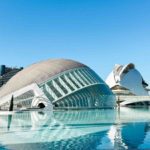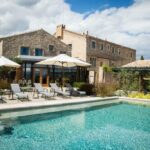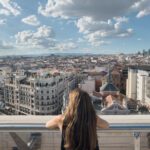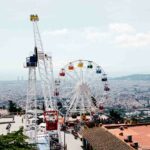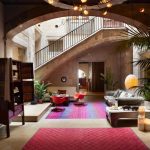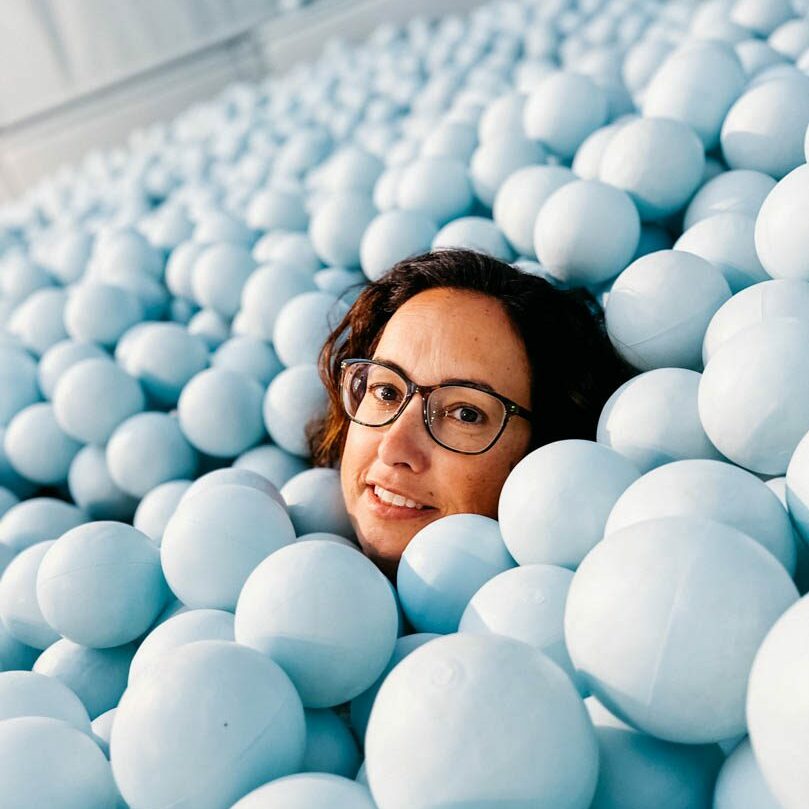Gaudi in Barcelona
It is impossible to visit Barcelona without visiting any work by Antoni Gaudí. Whether you like it or not, you will encounter it, his genius creation. The iconic buildings gave the city its exceptional architectural identity and unique atmosphere.
Of course, he did not act alone, there are many other interesting buildings in the city, more or less similar.
So let’s sort out all the buildings Gaudi has in the city.
Even if this is not your first time in the city, you may be surprised to discover its hidden and lesser-known buildings.
Outside of Barcelona, I have previously told about the Artiges Gardens and the Gaudi Center and Casa Navas in Reus, his hometown.
This time we will focus on the city. Let’s start with the most famous ones.
Content
About Antonio Gaudi - a few words about the man

Gaudí was born in Raus near Tarragona on June 25, 1852, to a family that knew severe tragedies – two of his brothers died in childhood, and a third brother, who was a doctor, died shortly after graduating. Nearby, his mother also died.
As a child, he used to observe nature a lot. This was possible because he could not engage in sports due to health problems from which he suffered. This observation led him to notice that there are no straight lines in nature. This insight would later find expression in the buildings he designed.
He not only designed the buildings but was also an active participant in the design, sculpture, and painting. Even when the buildings had straight lines, he refined them with curves and circles for the window frames, railings, and ceilings.
Gaudí played a significant part in the development of modernista, Catalan modernism, the local version of art nouveau. This style, which was greatly influenced by nature, advocated the use of simple and natural materials and rounded lines, as in nature.
Modernista developed in this area especially thanks to the collaboration between the various artists, architects, sculptors, and painters who worked at that time.
Gaudi was an artist who left his mark on the city and even after almost a century of his death, he still intrigues many around the world.
He was killed in 1926 in a car accident, when he was an infant.
La Segrada Familia

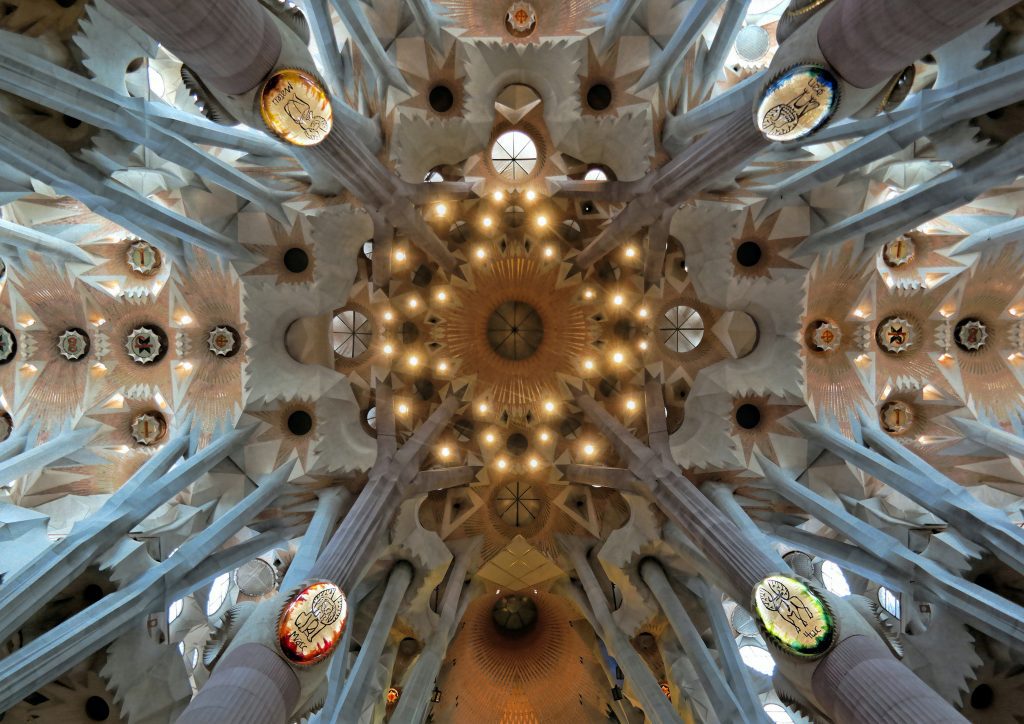
In short – the building most identified with the city and also one of the most impressive here in the area.
La Sagrada Familia is “The Holy Family”, a name for Jesus’ immediate family. The construction of this church began in 1882 and has not yet been completed to this day. I want to say, the church is not under renovation, it is under construction. The style of the church is also influenced by Modernista, a local art nouveau movement to which Gaudí belonged, as well as Gothic cathedrals.
As in other buildings, Gaudi not only planned, but was a full partner in the creation of the building and, among other things, also the sculptures in it.
The building has been through many hardships since the end of the 19th century. After Gaudi’s tragic death in an accident, the architect Domènec Sugranyes took command of the construction. Later, the building was destroyed during the civil war and rebuilt after it.
The original design includes 18 towers, divided into three facades that symbolize the birth, death and resurrection of Christ.
During the corona epidemic the works were stopped and recently they resumed in March.
In 2005 the building was declared a World Heritage Site by UNESCO.
A visit to the Sagrada Familia –
From the outside – you can come and view the building free of charge. I recommend going to the garden across from the church and taking photos from there – that way you will have a better chance of capturing the entire building in the frame.
Entrance to the building is paid. When you arrive you will receive an audio guide.
Address – Carrer de Mallorca, 401, 08013 Barcelona
Where do you eat in the area?
Churrería Sagrada Familia – Churros (Love churros? Go here)
Thai_Tuk Tuk Barcelona – Thai workers restaurant, good food and not expensive
Bristol Gastropub – a lovely brunch restaurant with great food
Arco Iris – an old vegetarian restaurant with a lunch menu that gives excellent value for money
Park Güell
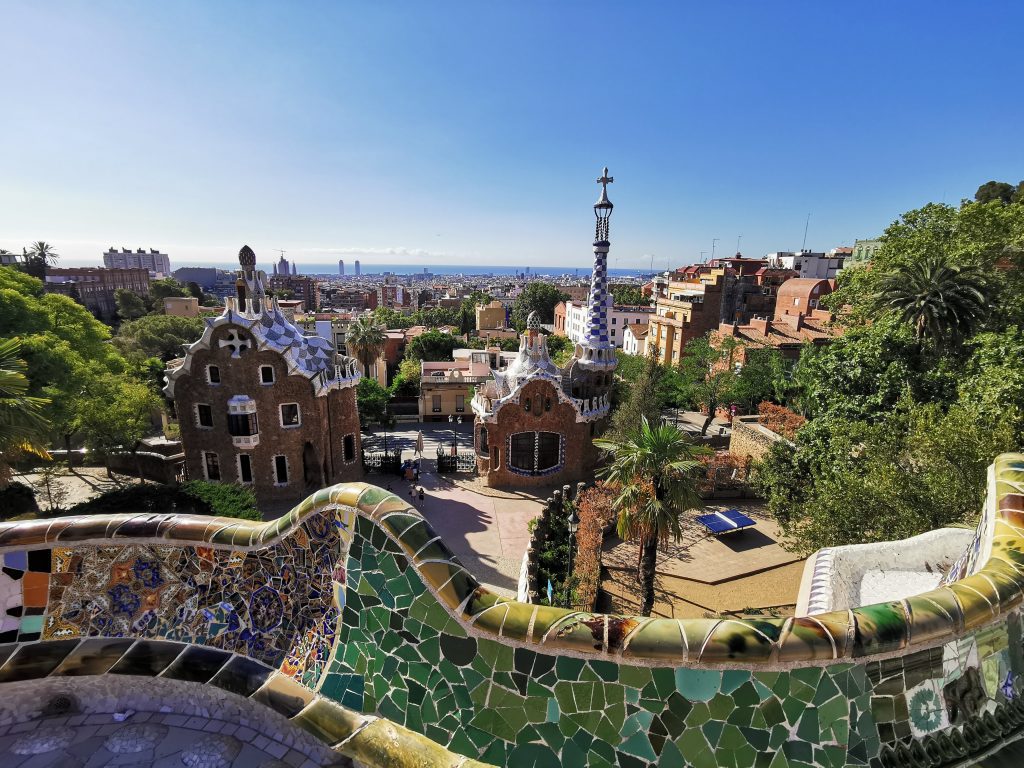
The lovely park that Gaudi designed for his patron Yousbi Goel (remember the name, it will appear later) above the El Carmel neighborhood which is part of Garcia. The one that looks like it’s part of some fairy tale.
The plan was to build a luxury residential complex there overlooking the entire city (don’t miss the view from the balcony). It was intended for the wealthy of the city, at a distance from it (then it was not as developed as it is today). In the end, not all the planned units were built and the park was abandoned for many years.
The iconic details are the lizard / dragon, the bench, the Doric columns under the balcony.
Park Goel was also awarded the title of World Heritage Site in 2005. Hon.
The visit to the park
In a small part of the park you can walk around for free. To see the iconic details and enjoy the wide view of the city, I highly recommend purchasing a ticket and going inside. Please note that the entire park is not in the flat part of the city, but is built on the side of the mountain and getting to it involves climbing.
It is worth considering buying a ticket for a bus that goes around the city.
If you are with children, they will enjoy the spaces here and the playground (to which, by the way, the entrance is free).
Address – 08024 Barcelona
Opening hours – 09:30-17:30
(before and after the entrance is for the residents of the neighborhood, free)
Where do you eat?
The location of the park is a bit of a culinary challenge. To get something beyond the available solution, you have to go a little further to Vila de Gràcia.
La Catrina is a very interesting Mexican restaurant. Familiar dishes and less so. I really enjoyed it personally.
Not far from there – the Mediterranean Zizinia that will remind you a little of the food of home.
Casa Mila
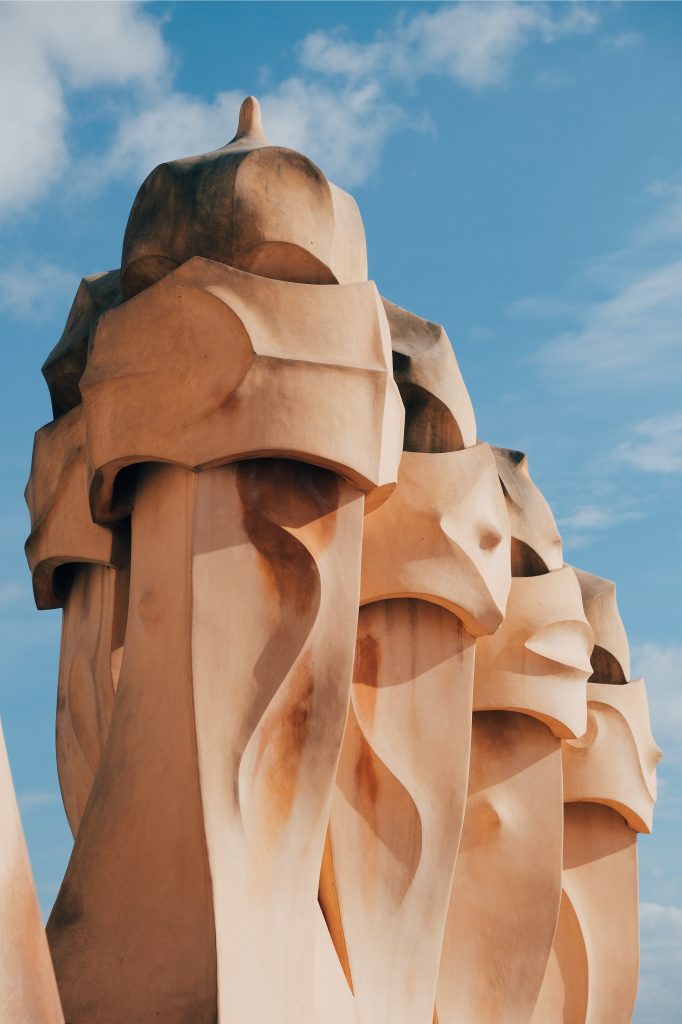
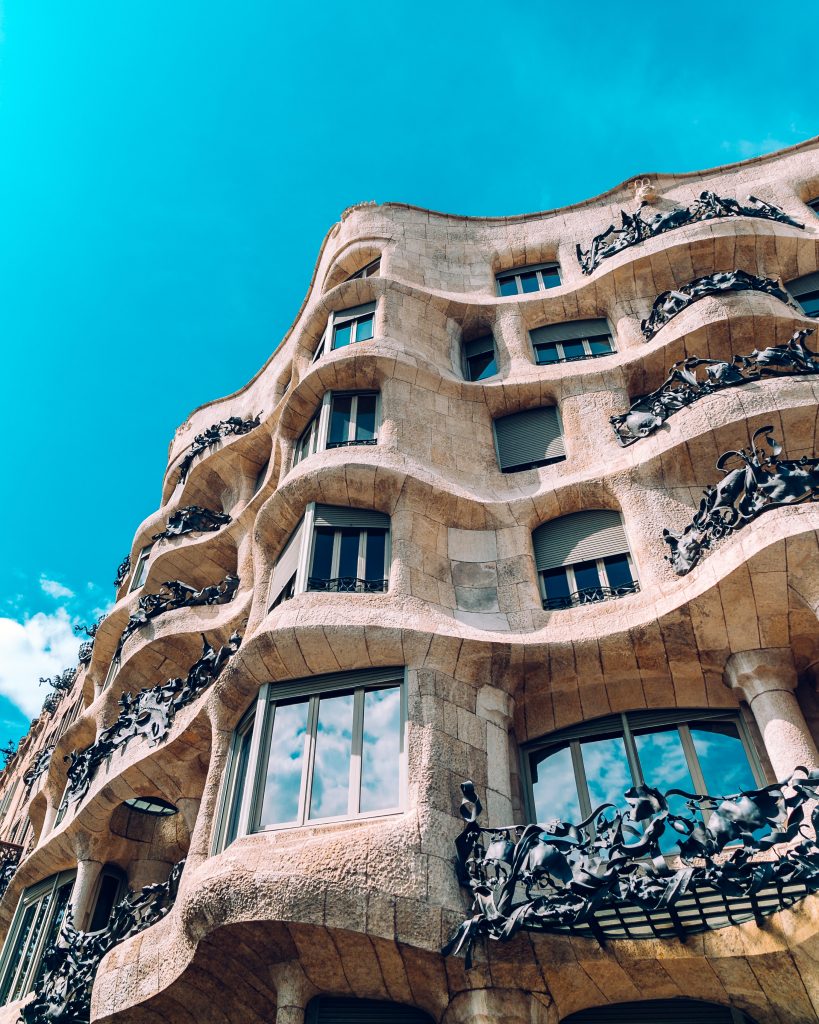
A residence designed by Gaudí on the most important street then (and still today) in the extension neighborhood (Haixample), for Mrs. Milà Pere Milà i Camps. The street in question is Passeig de Gracia.
One of the distinguishing characteristics of the house is that it does not have a single straight line. If today it sounds like a complex engineering project, imagine how it was received back then.
The whole structure is influenced by nature – the external shape that reminds of sea waves, the railings – climbing plants, the decorations are of shells, octopuses and that’s just a part.
The construction of the building was not a simple project, both because disputes erupted with the landlady over the fees and because the building exceeded the planning and construction laws.
Moreover, the city’s residents, who did not know how to “eat” this strange house, mockingly called it the quarry (“La Pedrera”), a nickname that has stuck with it to this day.
Today the building is used for residences and offices and part of it is open to the public.
This building also boasts the title of “World Heritage Site”, since 1984.
Address -Pg. de Gràcia, 92, 08008 Barcelona
Opening Hours –
Monday to Sunday and holidays: 9:00 – 18:30.
Night visit: 21:00 -23:00 at night
The visit to Casa Mila – the impression from the outside is quite limited. The entrance ticket also provides an audio guide.
Where do you eat in the area?
I recommended the Indian Swagatam Restaurant a long time ago in a post about vegetarian and vegan-friendly restaurants, and although a lot of time has passed since then, my repeated visits there confirm this recommendation even today. Go there because of the food and despite the decor. There is nothing to do, there are restaurants that don’t have it.
Close to there, Xurreria Trebol will close the sweet corner.
For light meals or coffee, it is very nice to sit in the cafeteria of Casa Seat.
Casa Batllo
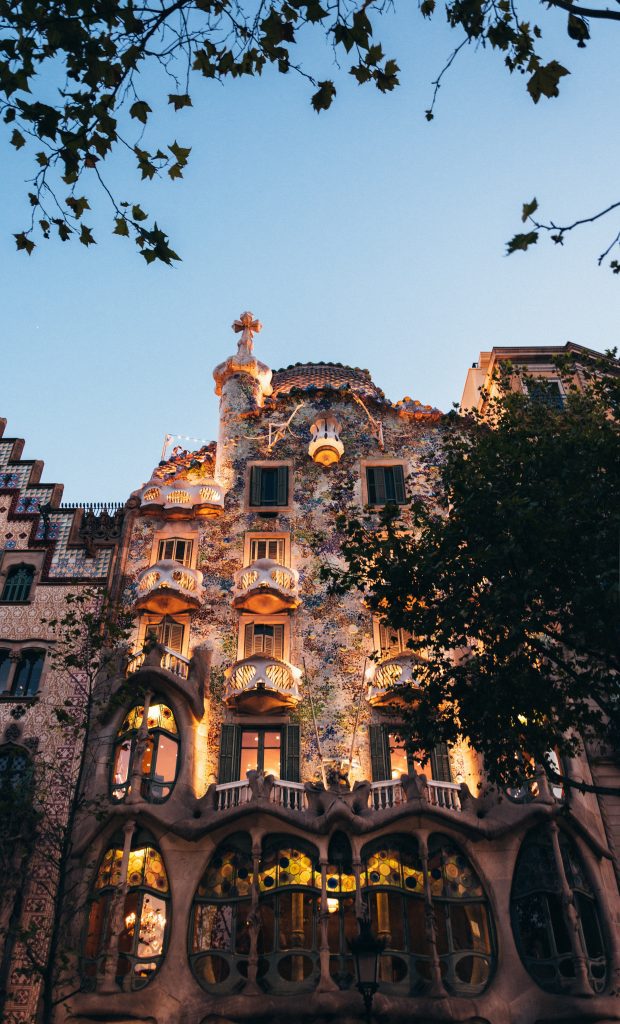
Casa Vicens


The first house built by Antonio Gaudi, between the years 1883-1888 and the last one that was opened to the public, only in 2017.
The four-story house that was used for the residence of the Vicens family, their servants and as a warehouse was sold and renovated several times.
In the building, the influence of the East is prominent – in the colors, the Arabic calligraphy, the structure of the ceiling and more. The house was designed with simple lines, some of which are straight and some are round, with a lot of presence of nature. Tiles with patterns of yellow flowers cover the exterior walls of the house. The use of ceramics was not spared inside the house either. The preference for materials in their original state characterizes the new wave that swept Europe at the time, modernism – stone, bricks, wooden beams, cast iron.
On the second floor is the permanent collection of the house, where a film is shown about the growth of the García neighborhood outside of Barcelona and then inside it, as well as about the design of the house, which was an innovative building and unlike anything that existed in the area at the time.
Also in the permanent collection – various documents from that period that teach about the cultural and historical context of the building in the city.
This house is also a world heritage site, since 2005.
Address –
Carrer de les Carolines, 20-26, 08012 Barcelona, Spain
Opening Hours –
From November 2 to March 31:
Monday to Friday from 10:00 am to 3:00 pm.
Saturdays and Sundays from 10:00 am to 7:00 pm.
Where do you eat?
El Petit Bangkok is an excellent Thai restaurant that was mentioned on the first list of vegetarians and vegans and I have also visited it many times. The design is colorful and happy.
Can Tresó is a very nice Catalan restaurant that you should also try.
Palau Güell
One of Antoni Gaudi’s lesser-known buildings, despite its super central location, a block from the bustling Rambla. The Goel Palace, built between 1886-1890, was the home of the Goel family until it moved to Park Goel
Gaudí designed a functional palace adapted to the needs of the family’s private life and the intense social and cultural life it hosted.
The building stands out for its innovative concept of space and light. Gaudí presented diverse solutions for the Goel Palace based on very personal approaches and created extraordinary forms of expression based on his imagination, using traditional materials (stone, wood, cast iron, ceramics, glass, etc.).
It was declared a Historic-Artistic Monument by Spain in 1969, as well as a Cultural Property of National Interest, and a World Heritage Site by UNESCO in 1984. The building reflects the essence of Gaudí’s later work and is essential to understanding his architecture.
Address -C / Nou de la Rambla, 3-5
08001 Barcelona
Opening Hours –
In summer (from April 1 to September 30): from 10 a.m. to 8 p.m. (the box office closes at 7 p.m.).
Last entry at 19:00.
In winter (from October 1 to March 31): from 10:00 a.m. to 5:30 p.m. (the box office closes at 5:00 p.m.).
Last entry at 4:30 p.m
Where do you eat?
Rocambolesc Barcelona is really not to be missed. This is the ice cream of Jordi Rocca, the young rib and confectioner of the three Rocca brothers who run a restaurant that has been awarded three Michelin stars in Girona.
BioCenter is a wonderful restaurant for vegetarians and vegans that I recently wrote about here.
Torre Bellesguard
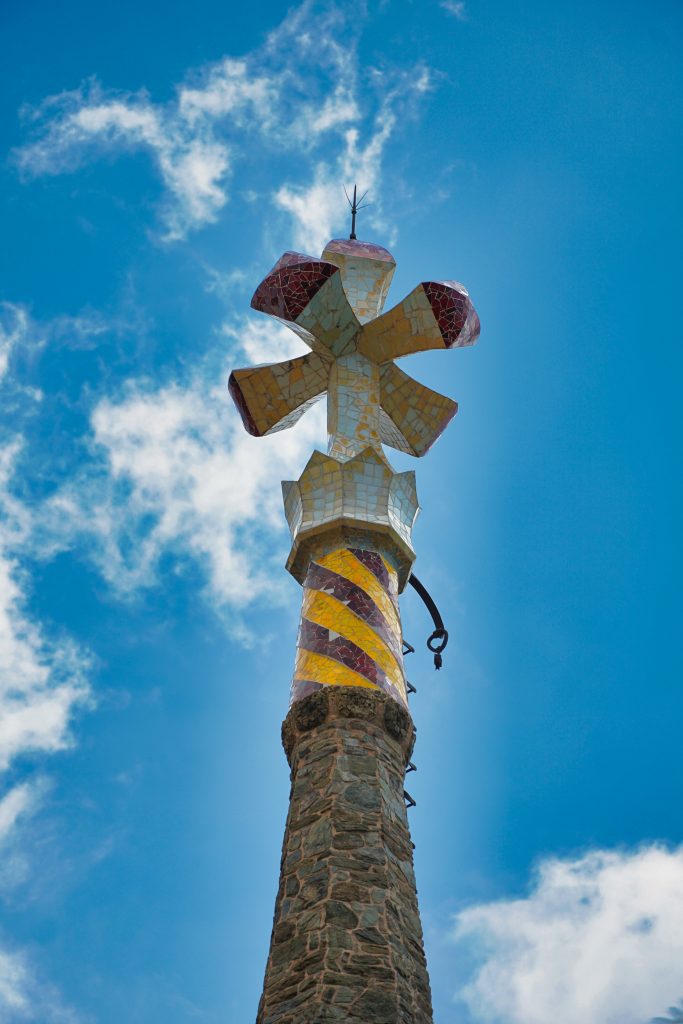
Bellesguard House was built by Antoni Gaudi between 1900-1909, using straight forms rarely seen in his other works. His inspiration was the medieval castle of Martin I, the last king of the Catalan dynasty of the House of Barcelona, who lived there until his death in 1410. Gaudí built a castle that was a mixture of Art Nouveau and Gothic styles and restored the ruins of the medieval palace, which are now part of the grounds of the estate.
The history of Bellesguard is closely related to the history of Catalonia. The many historical events that unfolded and the famous figures who passed through Belgard over the centuries influenced Antoni Gaudi and inspired him to create one of his personal, symbolic and fascinating works.
There are guided tours in Catalan, Spanish and English.
Address -c/Bellesguard nº 20, 08022, Barcelona
Opening Hours –
From Tuesday to Sunday, between 10:00 and 15:00
(last entry at 2:30 p.m.)
Where do you eat?
Pastisseria Canal – one of the best sweet shops in the city.
KOH-NDAL THAI BISTRO – Thai restaurant with tropical design. Good food, which the children also enjoyed. Àbac – If you are into Michelin restaurants, this is a great option to start from.

